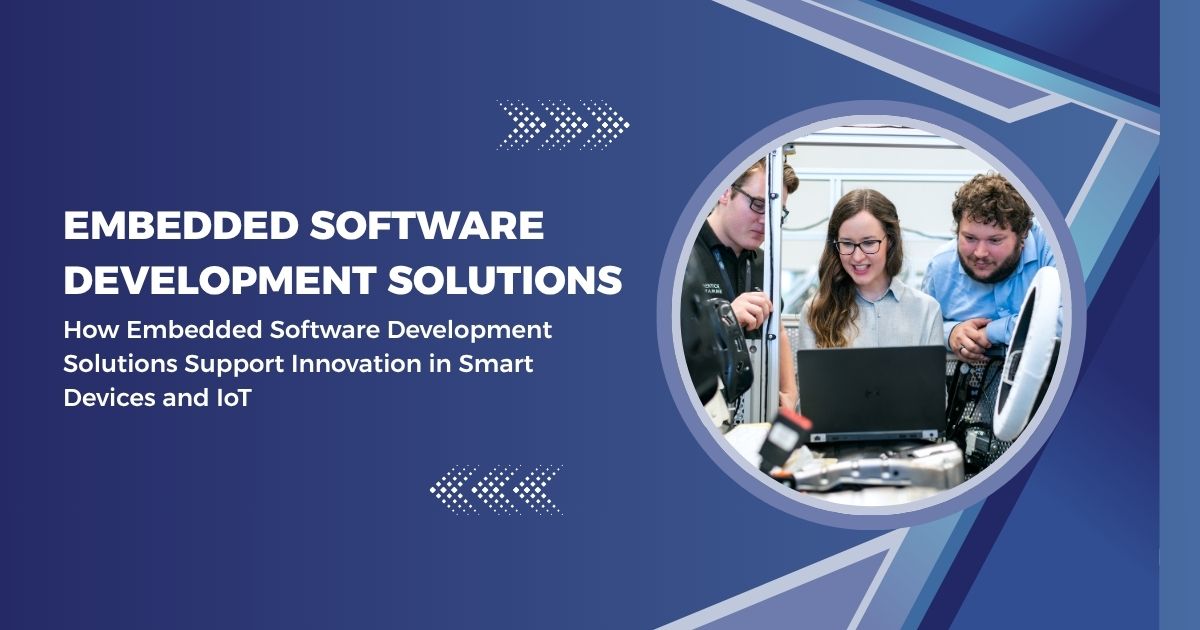How to Debug and Monitor IoT App Behavior in Production

Strong 8k brings an ultra-HD IPTV experience to your living room and your pocket.
The Internet of Things (IoT) has revolutionized industries by enabling smart devices to connect, collect, and exchange data in real-time. According to a Gartner report, the number of IoT-connected devices worldwide is expected to exceed 25 billion by 2030, creating vast opportunities for businesses but also posing significant challenges in monitoring and debugging IoT applications.
When IoT apps are deployed into production environments, ensuring their reliability, performance, and security is critical. Continuous monitoring and effective debugging practices are necessary to identify and resolve issues promptly, ensuring smooth and efficient operation.
This article will explore the best practices for debugging and monitoring IoT app behavior in production, providing insights into tools, strategies, and common challenges. Whether you're working with an IoT App Development Company or managing your own IoT ecosystem, these tips will help you maintain control over your IoT solutions.
The Importance of Debugging and Monitoring IoT Apps in Production
Before diving into the best practices, let's first understand why debugging and monitoring are essential in the production phase of IoT applications:
1. Real-Time Performance Tracking
IoT apps are deployed in environments where real-time performance is crucial. Devices, sensors, and servers must operate without delays or failures. Continuous monitoring helps ensure that your IoT system runs optimally, allowing you to detect issues as they arise.
2. Identifying and Fixing Bugs Early
Once an IoT app is in production, users rely on its functionality. Bugs, if left unchecked, can lead to performance degradation or system failures, which can be costly. Debugging tools allow you to catch issues before they affect end users.
3. Improved User Experience
Monitoring and debugging also contribute to user satisfaction. When systems work smoothly, it increases trust in the application. If issues arise, being able to fix them quickly ensures minimal downtime and consistent user experiences.
4. Security and Compliance
Security is another reason why debugging and monitoring are critical. IoT apps often handle sensitive data. Monitoring systems for vulnerabilities and applying necessary patches or fixes is essential to prevent security breaches.
Best Practices for Debugging IoT Apps in Production
The process of debugging IoT applications in production differs from traditional software development due to the distributed nature of IoT systems and the physical devices involved. Below are key strategies to effectively debug IoT apps.
1. Centralized Logging
Logs are one of the primary tools for debugging. Centralized logging ensures that data from multiple sources (e.g., edge devices, gateways, servers) is stored in a single location. This makes it easier to track errors across different components of the system.
Tools to Consider:
- ELK Stack (Elasticsearch, Logstash, and Kibana): Offers powerful log aggregation and visualization features.
- Splunk: A comprehensive platform for searching, monitoring, and analyzing machine-generated big data.
2. Distributed Tracing
Distributed tracing helps you track requests as they travel across various components in an IoT system. By enabling traceability, you can identify where the problem is occurring, whether it's in the device firmware, communication protocols, or backend servers.
Tools to Consider:
- Jaeger: An open-source tool for tracing distributed systems.
- Zipkin: Another open-source distributed tracing tool designed to help monitor the flow of requests.
3. Edge Device Diagnostics
Edge devices often perform local data processing before sending it to a central server. When an issue arises, it’s crucial to access diagnostic information directly from the devices.
- Implement Remote Debugging: Use remote debugging tools to access the IoT devices for logs and error reports. This is particularly important when troubleshooting issues that cannot be replicated easily.
- Use Edge Debugging Tools: Tools like Visual Studio Code can be used to deploy and monitor code remotely on IoT devices.
4. Automated Error Detection and Alerts
Automated error detection allows IoT apps to identify issues before human intervention is required. Implementing automated alerts for common issues such as device disconnections, unexpected behavior, or data anomalies can drastically reduce the response time to critical problems.
Tools to Consider:
- Prometheus + Grafana: Useful for real-time monitoring and alerting based on metrics and thresholds.
- Datadog: A monitoring service that offers real-time alerts and performance metrics.
5. Regression Testing in Production
In a production environment, updates are inevitable. However, new features or updates may inadvertently break existing functionality. Regression testing should be part of the continuous integration and deployment (CI/CD) process to ensure that bug fixes or new updates do not introduce new issues.
Methods to Use:
- Blue-Green Deployment: Use blue-green deployment to test changes in a staging environment before rolling them out to production.
- Canary Releases: Release updates to a small subset of users to detect and fix issues before full deployment.
Monitoring IoT App Behavior in Production
Monitoring is as essential as debugging in ensuring the smooth operation of IoT apps. It helps identify potential issues early and ensures devices are functioning as expected. Here are some strategies for effective monitoring.
1. Real-Time Monitoring of IoT Devices
Constantly track the behavior of each device in real-time to detect any potential malfunctions. IoT devices are often deployed in remote locations and may not always have a constant internet connection, making this monitoring even more critical.
Considerations:
- Network Health: Keep track of network connectivity to ensure devices can communicate with servers and other devices.
- Battery Levels: Many IoT devices run on batteries. Monitoring battery levels can help predict device failures before they happen.
2. Data Flow Monitoring
Monitor the data being collected from devices. If data from sensors or other devices suddenly drops, becomes inconsistent, or is delayed, it could indicate a problem.
Key Metrics to Monitor:
- Throughput: Measure the data transmission rate.
- Latency: Monitor how long it takes for data to travel from the device to the cloud or server.
- Data Integrity: Ensure the data collected is accurate and within expected ranges.
3. Device Lifecycle Monitoring
IoT devices have a limited lifecycle. From installation to maintenance to decommissioning, it is crucial to monitor the health and status of each device.
Tools to Consider:
- IoT Device Management Platforms like Microsoft Azure IoT Hub or AWS IoT Device Management can be used to monitor device health and perform remote diagnostics.
4. Behavioral Analytics
With the vast amount of data generated by IoT devices, applying behavioral analytics can provide insights into device performance and help predict potential issues.
Example: If a device starts to show behavior patterns similar to previous failures, an alert can be triggered to prevent system-wide disruptions.
5. Security Monitoring
Security is paramount in IoT apps, especially as more devices are connected to the internet. Security monitoring tools can track for unauthorized access, unusual data requests, or malware.
Tools to Consider:
- IoT Security Frameworks: Ensure that monitoring systems are compliant with security protocols such as NIST or ISO/IEC 27001.
- Cloud Security Providers like AWS IoT Security or Google Cloud IoT offer dedicated security monitoring for IoT applications.
Common Challenges in Debugging and Monitoring IoT Apps
Despite having the right tools and strategies, several challenges often arise in debugging and monitoring IoT apps in production:
1. Device Heterogeneity
IoT devices come from different manufacturers, and they often use different communication protocols. This diversity can make it difficult to standardize monitoring and debugging practices across all devices.
2. Network Issues
IoT devices often rely on wireless communication, making network instability a common issue. Monitoring tools need to be designed to account for intermittent connectivity and provide insights even when devices are not fully online.
3. Data Volume
The sheer volume of data generated by IoT systems can be overwhelming. Proper filtering and aggregation mechanisms are necessary to ensure only meaningful data is used for analysis.
4. Security Concerns
Security vulnerabilities in IoT apps can be a significant concern, especially when dealing with large numbers of devices. Monitoring systems need to be secure and robust to prevent unauthorized access.
Conclusion
Debugging and monitoring IoT apps in production require a comprehensive approach that integrates real-time monitoring, efficient debugging tools, and continuous testing. As the IoT ecosystem continues to expand, leveraging advanced tools and strategies will be essential to ensuring the reliability, security, and performance of these systems.
Working with an experienced IoT App Development Company that specializes in robust monitoring and debugging solutions can help businesses stay ahead of issues, optimize IoT app performance, and provide users with seamless experiences.
By implementing best practices such as centralized logging, edge device diagnostics, and behavioral analytics, businesses can overcome common IoT challenges and maintain high-quality performance in production environments.
Note: IndiBlogHub features both user-submitted and editorial content. We do not verify third-party contributions. Read our Disclaimer and Privacy Policyfor details.







